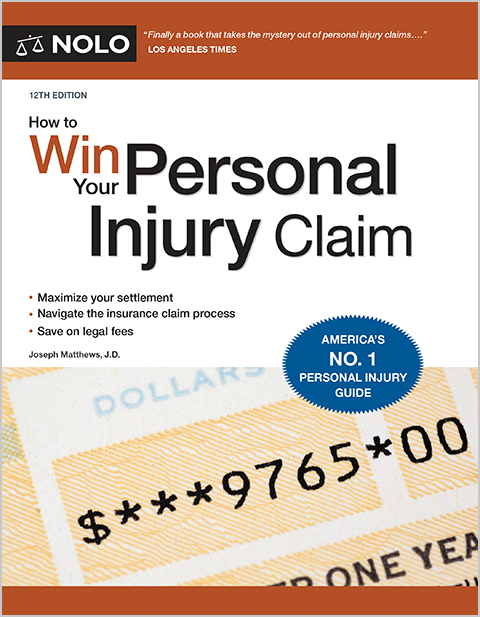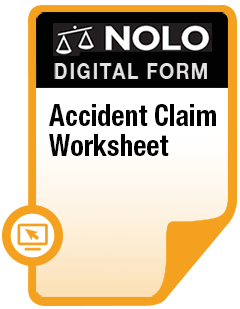If your property damage case ends up in small claims court, how much compensation should you ask for?
When your property has been damaged by someone else's negligent or intentional action, you usually have the right to recover compensation in an amount that's equal to:
- the cost of repairing the property, or
- the cost of replacing the property (if the cost of repairs would approach or exceed the property's value at the time it was damaged).
Property damage cases often end up in small claims court, and they're usually pretty straightforward. But a common question from property damage claimants is "How much should I ask for?"
How Do I Calculate the Value of Damaged Property?
There's almost never a definitive answer to how much a given piece of used property is worth, but a key part of any small claims case is figuring out how much compensation ("damages" in the language of the law) you're going to ask the court to order the other to side pay you.
Recognizing that reasonable minds can differ, it makes sense to place a fairly aggressive value on the property. But keep things within reason, or you'll likely offend the judge and perhaps even weaken your case.
Keep in mind that when the cost of fixing the item exceeds its total value, you're not entitled to a new or better version of the property that was damaged—you're only entitled to have your loss made good. In short, in this situation, the most you can recover is the fair market or "actual cash" value of a damaged item (the amount you could have sold it for), figured at the time the damage occurred.
Make Sure Your Property Damage Losses Are Within Your State's Small Claims Court Limits
A big consideration in any small claims court case is whether the amount you're planning on asking for is within the dollar limit for these kinds of cases. Every state has a different cap on the amount of compensation a small claims plaintiff can ask for and receive. Some counties even set their own limits. Before filing a property damage case, make sure you have the latest details on small claims court dollar limits.
How Do I Prove the Value of Damaged or Destroyed Property?
Unfortunately, believing what something is worth and proving it are quite different. A laptop that you're sure is worth $2,000 may seem like it's only worth $500 to someone else. In court, you'll want to be prepared to show that your property is worth every bit of the $2,000.
The best way to do this is to get some estimates (opinions) from experts in the field (like a used car dealer if your vehicle was totaled). One way to present this type of evidence is to have the expert come to court and testify, but in small claims court you can usually just have the expert prepare a written estimate, which you can then present to the judge.
Depending on the type of property involved, you may also want to check online listings for the prices asked for comparable goods, and submit these to the judge. And of course, there may be other creative ways to establish the extent and cost of your property damage.
Learn more about presenting your evidence in small claims court.
Calculating a Vehicle Damage Case in Small Claims Court
When it comes to a damaged vehicle, there are some reliable places to start valuation-wise, including Kelley Blue Book.
EXAMPLE: John Quickstop plows into Melissa Caretaker's new BMW, smashing the left rear fender and bumper. Melissa is entitled to recover the amount it would cost to fix, or if necessary, replace, the damaged part of her car if John won't pay voluntarily. Melissa should get several repair estimates from responsible body and repair shops and sue for an amount that's somewhere around the average.
Had Melissa been driving a ten-year-old car, the cost of repairs might have exceeded the value of the entire car. In this situation, she would be entitled to the actual cash value of the car, not what it would cost to repair it.
EXAMPLE: Let's return to Melissa from our last example, assuming now that her BMW is ten years old. If several used car price guides indicate the car was worth $4,500 and it would cost $5,000 to repair the damage, she would be limited to $4,500 compensation, probably minus what the car could be sold for in its damaged state (the vehicle's "scrap" or salvage" value).
Calculating a Clothing Damage Case in Small Claims Court
Clothing is worth discussing separately because disputes involving clothing are extremely common in small claims court, and judges seem to apply a unique logic to these kinds of cases. The reason for this is that clothing is personal to its owner and often has little or no value to anyone else, even though it may be in good condition.
It follows that if a judge strictly applied regular personal property rules (that you're limited to recovering no more than the current market value of a damaged item), plaintiffs would often get little or no compensation. Recognizing this, most judges are willing to bend the rules a little to arrive at a value for damaged clothing that is based on the item's original cost and how long it had been worn.
When suing for damage to new or almost-new clothing, you should probably sue for the amount you paid. If the damaged item has already been worn for some time, sue for the percentage of its original cost that reflects how much of its useful life was used up when the damage occurred. For example, if your two-year-old suit that cost $1,900 new was destroyed, sue for $950 if you feel the suit would have lasted another two years.
In clothing cases, most judges want answers to these questions:
- How much did the clothing cost originally?
- How much of its useful life had already passed at the time the damage occurred?
- Does the damaged item still have some value to the owner, or has it been ruined?
Example 1: Wendy took her new $850 coat to Rudolph, a tailor, to have alterations made. Rudolph cut part of the back of the coat in the wrong place and ruined it. How much should Wendy sue for? The entire $850, because the coat was almost new. She could probably expect to recover close to this amount.
Example 2: The same facts as in Example 1, but the coat was two years old and had been well worn, although it was still in good condition. Here, Wendy would be wise to sue for around $250 and hope to recover between $175 and $225.
Example 3: This time let's return Wendy's coat to its almost new condition but have Rudolph damage it only slightly. Wendy should probably still sue for the full $850. Whether she could recover that much would depend on who's hearing the case. Most small claims judges would probably award her a little less on the theory that the coat retained some value. Wendy should argue that she didn't buy the coat expecting to not be able to wear it in public, and as far as she was concerned, the coat was ruined.
Can I Handle a Property Damage Case Myself?
It's usually a good idea to handle a property damage case yourself, especially if you're going to small claims court. Even if you're allowed to have a lawyer represent you in small claims court (some states don't allow it), paying for an attorney's services probably doesn't make financial sense. So, representing yourself is often the right move.
Besides the small claims dollar limits we discussed earlier, one of your first concerns will be the lawsuit-filing deadline for these kinds of cases. Learn more about the statute of limitations for property damage lawsuits in your state. And to get more comfortable with the idea of handling your own case, check out these small claims court FAQ.


